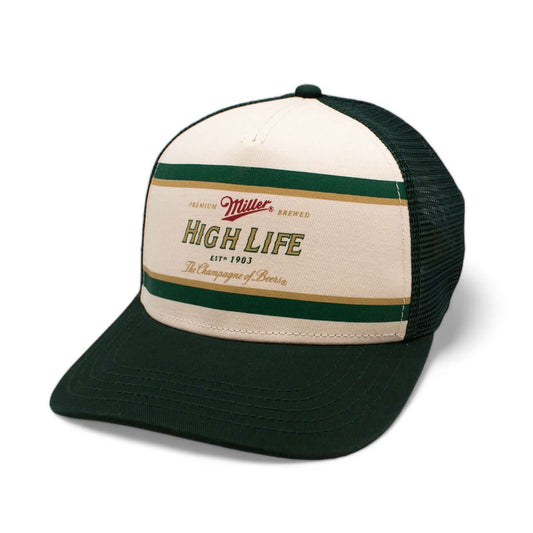-
Hiroshima Toyo Carp Hats: Vintage Navy Flat Bill Hat | Nippon
Regular price $40.00 USDRegular priceUnit price per -
Hiroshima Toyo Carp Hats: Navy Trucker Hat | Nippon League
Regular price $35.00 USDRegular priceUnit price per -
AMERICAN NEEDLE Coors Beer Canvas Cappy Adjustable Snapback Baseball Trucker Hat (23005A-COORS-NVY)
Regular price $35.00 USDRegular priceUnit price per$0.00 USDSale price $35.00 USD -
Hiroshima Toyo Carp Hats: Vintage Trucker Hat | Japanese Baseball
Regular price $30.00 USDRegular priceUnit price per -
AMERICAN NEEDLE Miller High Life Sinclair Adjustable Snapback Trucker Hat, Dark Green Ivory (MHL-DGRN)
Regular price $35.00 USDRegular priceUnit price per
THE THICKNESS OF THE ICE IN THE NHL IS VERY IMPORTANT
The National Hockey League (NHL) is one of the most prominent sports leagues in the world. It is also one of the most physical, with players skating at top speeds and hitting each other with full force. But what a lot of people don’t know is that there are regulations in place to ensure that the ice surface is thick enough so that it doesn’t crack under the pressure. Let’s take a look into how thick NHL ice actually is.
HOW IS NHL ICE THICKNESS MEASURED?
During games, however, they don’t usually measure or adjust the thickness—they let it slide until after the game when they can take their time measuring each section more carefully and making adjustments if necessary. This is due to two factors: one is that adjusting the thickness during games could throw off gameplay and two is that there just isn’t enough time during games to make any significant adjustments anyway!
AN IDEAL TEMPERATURE MAKES THE PERFECT NHL ICE
In order to determine the ideal thickness of the ice for NHL games, we first need to look at what makes the perfect temperature for an ice skating rink. Generally speaking, it should be between 24 and 26 degrees Fahrenheit (-4 to -3 Celsius). Anything colder than that will cause the ice to become too brittle and prone to cracking, while anything warmer than that will make it too soft and slow down the players.

Score a Vegas Golden Knights hat you can't find anywhere else. Find more Hat Pro Shop Exclusives like this for your favorite team. Hurry! Fans like you are clearing out our stock faster than we can say face off.
HOW THICK IS THE NHL ICE?
So now that we know what temperature is best for an NHL-sized rink, we can look at what kind of thickness is necessary for optimal play. Most rinks are kept around three-quarters of an inch (1.9 cm) thick with specific measuring points throughout the rink being checked every few days or so by facility staff members. This may sound thin but consider this—over 20,000 gallons (75,700 liters) of water are used to make each sheet of ice! That takes quite a bit of time—usually over 10 hours—to freeze into that solid sheet of ice we see during games.
NHL ICE RULE
In order for hockey to be played properly, it is important for the ice to be thick so that it doesn't crack or break. According to Rule 202 in the NHL Official Rules, "the thickness of the ice shall be not less than 3/4-inch measured from the bottom surface." This means that all of the rinks used by NHL teams must have a minimum thickness of 3/4-inch. This thickness must be maintained throughout all games and practices, as well as during any pregame activities such as warm-ups or drills.

Show your love for your favorite team with a New York Rangers hat that looks great and will last season after season. Take your pick from different styles, colors, and designs, some of which you can only find at Hat Pro Shop.
THE BENEFITS OF THICK ICE
Having thicker ice ensures that there is less risk for injury on the rink, especially when multiple players are involved in hard physical contact. Thicker ice also helps maintain consistency across all rinks used by NHL teams which makes for a more uniform playing surface and allows for better control over puck movement and speed. Finally, having thicker ice also ensures that there are fewer stoppages due to repairs resulting from cracks or breaks in thinner ice surfaces which keeps game flow steady and uninterrupted.
SCIENCE KEEPS THE SPORT ALIVE
As you can see, there’s quite a bit of science involved in keeping NHL rinks up to code in terms of both temperature and thickness. But if done correctly, these measures ensure a safe playing environment for players as well as an enjoyable viewing experience for fans watching from home or in person! So next time you watch your favorite team play on TV or in person, remember all the hard work behind maintaining their playing surface!






